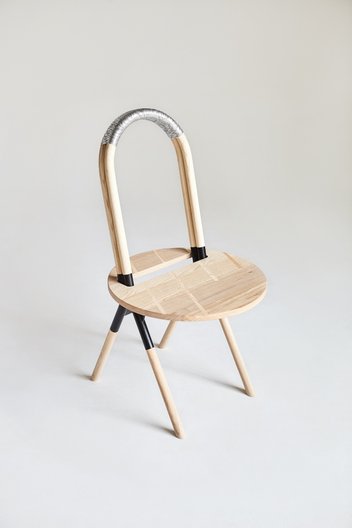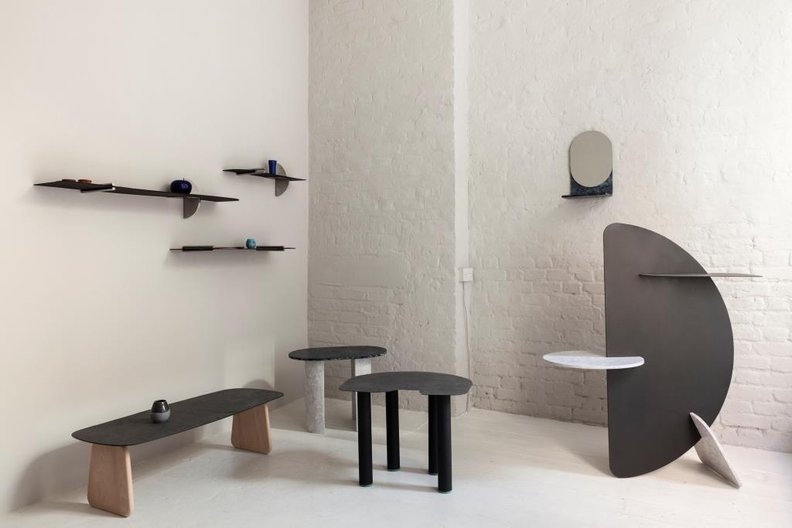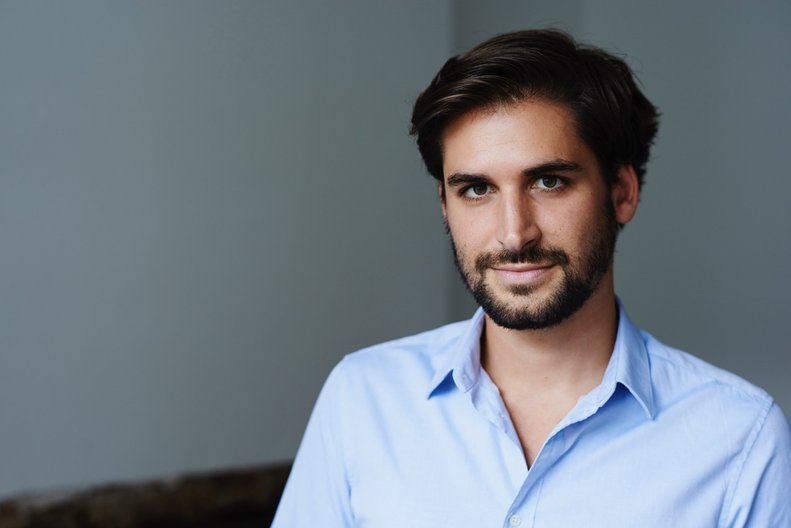20 July 2017
Following an open call for proposals, London-based designer Matteo Fogale has been selected to take part in the Julio Vilamajó Residency. Matteo will be travelling to Uruguay later this year, here he tells us about his work and what he hopes to explore and discover.
Tell us a bit about yourself; your background and areas of interest.
I was born and raised in Uruguay until the age of 17, when my parents decided it was time for us to move to Italy. All my grandparents migrated to Argentina from Italy and my father grew up in Venice. I had a very creative family, my grandfather was a painter/ sculptor and my mother was always a passionate and talented crafts person. She always supported me and pushed me towards a creative career. Once in Italy I had the chance to study at an Art School where my - until then - hobby craft skills started to take a more interesting form and I began to believe I could make art a substantial part of my life. After Art School I was lucky enough to meet someone that introduced me to the world of design. Here I could see the potential in creating functional art. Design at the time appeared to me as an art form which embraced cultural and social aspects, whilst both considered and democratic but at the same time eccentric and unique. All these things felt right to me, so I decided to apply for the Arts and Design Faculty at IUAV University of Architecture in Venice. During these years I was introduced and strongly influenced by the work of some of the most renowned Italian design masters. Italian design and art culture became the most influential thing in my professional life. After 8 years in Italy, I decided it was time for a change and decided to move to London.
Working in London taught me a slightly different approach to design, a more D.I.Y. approach compared to the industry-led Italian one. Here I embraced the maker movement and became more and more interested in self-production and bespoke pieces. Perhaps a little closer to that art and craft with which I originally began.
What are you working on or researching at the moment?
Currently I am going through some interesting changes and exploring some new routes. I am working on several bespoke furniture pieces for private clients including large dining tables, desks, sofas, side tables and chairs. I am also hoping to find the time to pursue some new self-initiated experimentations. In addition, I am working part-time in a workshop where I’m expanding my fabrication and making skills as well as tutoring design and model-making in several schools and universities.
Why are you interested in the work of Julio Vilamajó and why did you apply for the residency?
I find the mixture of traditional and avant-garde elements in Vilamajó’s work extremely inspiring. From his inclusion and consideration of art and craft to his high attention to detail in the surrounding spaces, interiors, furniture, pottery and even jewellery.
To be able to demonstrate skills and to work in such different scales is the highest reward for an artist. Vilamajó shows such consideration and appreciation of craftsmanship, to think of buildings as cultural pieces with many functionalities. An artist who became an architect.
Vilamajó lived in a transition period for architecture, things where changing at the time and sometimes changes are good because they give us the opportunity to explore and experiment with new things. To create work no one has done before. He took that opportunity and made the best of it.
He travelled across Europe finding motivation to come back to his homeland and give Montevideo an international presence, something I’m very fond of and feel very connected to. We tend not to appreciate what we have until we look with fresh eyes from outside.
He had the chance to go out, explore and then to return, eager to transform the city from which he originated. A city which has only had around two hundred years of existence. Creating a fresh opportunity to study how a ‘new’ city could be put on the map right next to the old world. A study that takes him to work in an urbanist way, considering the whole plan of Montevideo as a blank canvas. It was this huge challenge which motivated his entire career as both an architect and artist and is surely what motivated me to apply for the Julio Vilamajó residency.
What are you hoping to research and to discover or explore? How are you planning on conducting or what are you hoping to produce as a result of your residency? Are you taking a particular approach?
I am eager to explore the extensive archive of Vilamajó’s work. To find out what inspired him, what his vision and interests were, his achievements and failures. I am very curious about his ‘Plano Regulador de Montevideo’ and wish to explore how his vision of the city compares to how the city developed up to this day. I want to know what aspects of craftsmanship were important to him at the time and how this craftsmanship is today. I am interested in exploring how the graphical elements of the city, such as the urbanism of the buildings and craft, could translate into new pieces of art, products or furniture. All inspired from Vilamajó’s own work and vision. As a product and furniture designer, I am of course very interested to explore the aspects of Vilamajó's work, not only as an architect but also as a designer. I find his consideration of interiors, furniture, pottery and jewellery very inspiring and I am hoping to both find and catalogue new, inspiring materials to create the background of my work.
What are your expectations of the residency – or, what are you most looking forward to?! - and how do you feel the experience might open up or have an impact on your own work or practice?
I am really looking forward to meeting everyone from the Universidad de la República and the Museo Casa Vilamajó and hearing all the stories behind Vilamajó’s work.
I am also looking forward to exploring and getting to know both the past and the contemporary scene of design and architecture in Uruguay a little better. This is to me a real opportunity to go back to my home-country and do what I love most, meet interesting people, hear amazing stories and produce some good work. I very much look forward to exploring and expanding my practice back in the country I was born and raised, I hope this will be just the beginning of a long connection and journey.
Matteo's trip to Uruguay will be taking place later in the autumn, keep up with him while he's there by following us on Twitter & Instagram.



